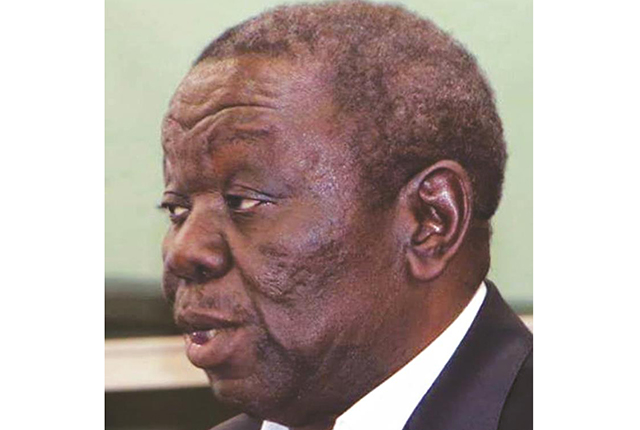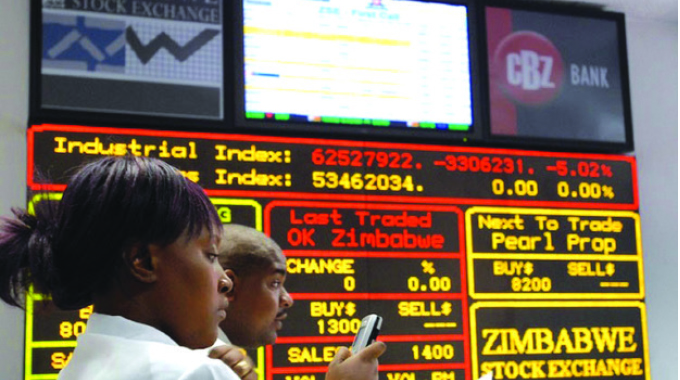Exports fail to meet target: Zimstat


Zimbabwe Institution of Engineers ceo Dr Sanzan Diarra (centre) flanked by ZCIT committe chairperson Jacob Mtisi (right) and deputy chairperson Isaac Jaza at a press conference in Harare yesterday.- Picture by Tariro Kamangira
Zimbabwe’s exports failed to go past the key $3 billion level in 2016 after closing December at $2,83 billion. Total imports for the year were $5,21 billion, subsequently leading to an annual trade deficit of $2,38 billion against $3,29 billion achieved in 2015.
Data from Zimstat shows that exports failed to meet the targeted $3,36 billion but were a marginal increase from the $2,7 billion achieved last year.
Zimbabwe’s main exports are still dominated by commodities, which are more vulnerable to external shocks, which point to the need for more value addition strategies to transform the country into a producer of finished products.
The country failed to meet the target of the National Trade Policy which was to increase export earnings from $4,3 billion in 2011 to $7 billion in 2016. The country is expected to launch a new five-year trade policy this year.
Total imports dropped from $6 billion in 2015 mainly due to the general weak aggregate demand on the back of an economic slowdown, the declining value of fuel imports, Government protectionist policies, weak South African rand and challenges faced by importers in making foreign payments.
The country imported fuel and lubricants amounting to $1,3 billion, about one fifth of the total import bill.
Passenger motor vehicles worth more than $110 million were also brought in so were capital goods worth more than $780 million, representing 15 percent of total imports for the year.
The country’s manufacturing sector last year reported machinery breakdown and usage of antediluvian equipment as one of the main constraints of capacity utilisation.
Generally, 2016 was a difficult a difficult year for importers. Having to endure the challenges associated with the external payment systems which crept in late 2015, importers were subjected to a new intervention from Government; pre-shipment inspections through Bureau Veritas.
The objectives of the inspections were to check on the quality of imported goods to reduce importation of hazardous and substandard substances, including improving the collection of customs duty.
But before importers could adjust to the new requirement, the Reserve Bank of Zimbabwe in May introduced an import priority list to aid in the utilisation of foreign currency.
The list favours the importation of raw materials, fuel, capital goods and dividends.
It was hoped that the measure would reduce the importation of trinkets and unproductive.
But yet again, soon after this, the Ministry of Industry and Commerce introduced Statutory Instrument 64 of 2016, which took out 42 products from the Open General Import Licence.
For December, the trade deficit widened sharply to $197 million from $14,6 million in November 2016, as exports took a sharp dip Exports for the month of December declined from November’s record high of $460,7 million to $292 million.
On the other hand, imports increased relatively from $475 million in November to $489 million in December 2016.
The sharp increase in December’s trade deficit is largely as a result of substantial decreases in gold and tobacco export earnings during the month.
Gold exports declined from $108 million in November to $67,8 million, while flue cured tobacco also declined from $248 million in November to $119 million in December 2016.
The December trade deficit was also due to the fact that there was almost a trade equilibrium in the month of November, compared to a huge shift which happened in December.
South Africa continues to be Zimbabwe’s top export market for the month of December, although exports declined from $390 million to $238 million, while imports stood at $208 million.
This means that Zimbabwe had a trade surplus of $30 million with South Africa in December.
A significant jump in exports was also noted in France, where there was an increase from November’s $189 839 to $6,7 million in December. Singapore was Zimbabwe’s second largest import market, registering imports of $100 million with China being a distant third at $39 million. — Wires.








Comments